I first wrote about EIG's major outage as it was occurring and had to speculate on a few things before I had the data to support those guesses. This post is a more complete picture of what happened.
Recap
EIG had a major outage on August 2, 2013 that lasted for many hours because core switches in their Provo, Utah datacenter failed. This failure caused customers of BlueHost, HostGator, JustHost and HostMonster to be taken offline.
I speculated as to what would occur after the outage. How would the brands of the affected companies be perceived after such a catastrophic failure? I looked for a comparable event: the GoDaddy DNS outage in September 2012. What I observed from that event was a very quick return to normal volumes of messages and sentiment. GoDaddy regressed to the mean.
GoDaddy
The charts I used in my original post were lacking. I didn't have time to really collect and analyze all the data, especially sentiment. I could eyeball the historical data and see the ratings bounced back to their original levels but it wasn't a granular look.
This chart shows the actual outage, tweet volume and sentiment. It's immediately clear that negative sentiment has a huge spike. I also suspect that a lot of the positive messages are actually mis-categorized; Review Signal isn't perfect and things like sarcasm are one of the hardest things for the sentiment analysis algorithms to categorize. The unusual volume lasts three days and then quickly drops back to a normal looking pattern with perhaps a slightly higher baseline volume. The actual rating goes back to hovering around 50%, which GoDaddy's long-term graph hovers around as well.
Let's get back to the EIG outage and the affected brands. I am only going to talk about two of the brands, BlueHost and HostGator, in this post because on a granular level, the other two, HostMonster and JustHost, didn't have enough data. The brands without enough data will take more time to develop a clear picture about the effects of the outage.
BlueHost

I was wrong. So far at least. BlueHost had an overall rating of 57% before August 2. It hasn't broken 50% since the outage. BlueHost did not, or has not yet, regressed back to the mean. What's interesting is that the volume of tweets about BlueHost's outage was more than double in quantity to the similar GoDaddy outage, but they both quickly dropped back to normal volume within days of the event.
I will explore this a bit more, but to do that I need to show you the other brand.
HostGator
HostGator's outage looks almost identical to GoDaddy's outage. Around 1000 negative messages on the day of the outage and back to normal within days. HostGator appears to have regressed to the mean as quickly as GoDaddy, its rating has been over 60% two days, which are pre-crash levels, where its average rating was 62%. HostGator behaved exactly as I predicted.
Weird Conclusions and Speculations
Why hasn't BlueHost regress to the mean? One explanation, which I was alerted to by a kind reader (Thanks Linda!), is that not all of HostGator's customers were in the Provo, UT data center. So the outage may have disproportionately affected BlueHost customers compared to HostGator customers. BlueHost is also the larger hosting company by number of customers, although not domain count.
That explanation may explain the volume difference, but I don't think it explains the regression to the mean for one brand and not the other. Presumably the affected customers of both brands should be equally upset. Those lingering feelings should last equally long for both groups of customers.
I can't explain why we haven't seen BlueHost regress, but I can point out a few differences between this outage and the GoDaddy comparison which may be factors. One important factor is duration. GoDaddy's outage lasted 4-5 hours according to reports. The EIG outage lasted from the morning of August 2 until 9 PM. They were reporting 'intermittent instability' into August 3 according to their official website.
I could speculate that the combination of severity, duration and size of the affected brand has caused some sort of more permanent brand damage to BlueHost, but I think that's premature. BlueHost hasn't regressed yet, but I still think it will eventually. A company that large, with such a huge brand and marketing infrastructure will probably recover. I will be watching BlueHost carefully for the next few weeks or months along with the smaller brands to see if it happens. If it doesn't, this will be an interesting case study in branding, communication and perhaps social media.
Thank you for reading and if you have any ideas, feedback or suggestions please leave them in the comments below.
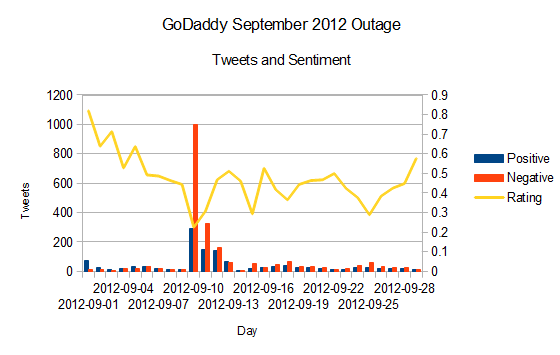
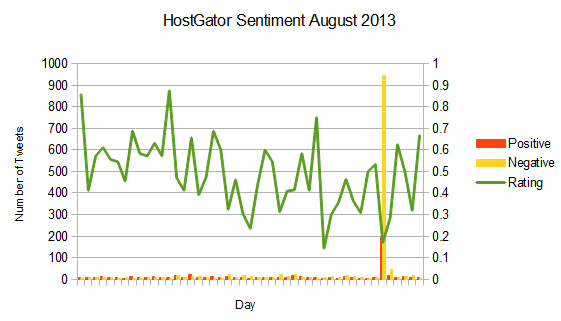
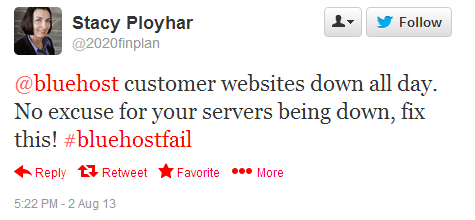

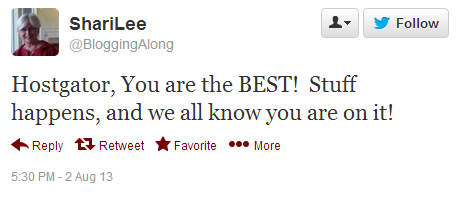
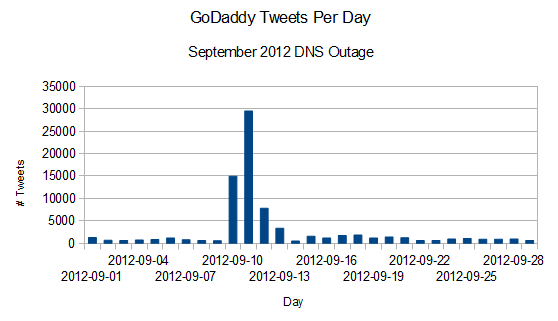






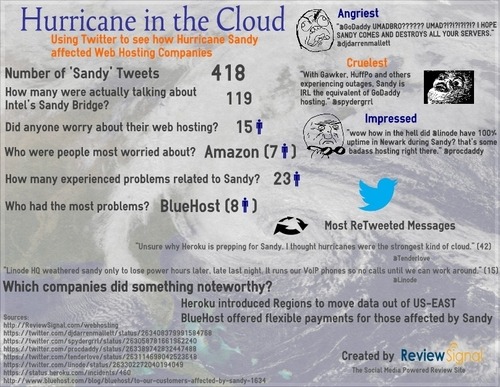

 WordPress & WooCommerce Hosting Performance Benchmarks 2021
WordPress & WooCommerce Hosting Performance Benchmarks 2021 WooCommerce Hosting Performance Benchmarks 2020
WooCommerce Hosting Performance Benchmarks 2020 WordPress Hosting Performance Benchmarks (2020)
WordPress Hosting Performance Benchmarks (2020) The Case for Regulatory Capture at ICANN
The Case for Regulatory Capture at ICANN WordPress Hosting – Does Price Give Better Performance?
WordPress Hosting – Does Price Give Better Performance? Hostinger Review – 0 Stars for Lack of Ethics
Hostinger Review – 0 Stars for Lack of Ethics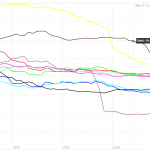 The Sinking of Site5 – Tracking EIG Brands Post Acquisition
The Sinking of Site5 – Tracking EIG Brands Post Acquisition Dirty, Slimy, Shady Secrets of the Web Hosting Review (Under)World – Episode 1
Dirty, Slimy, Shady Secrets of the Web Hosting Review (Under)World – Episode 1 Free Web Hosting Offers for Startups
Free Web Hosting Offers for Startups